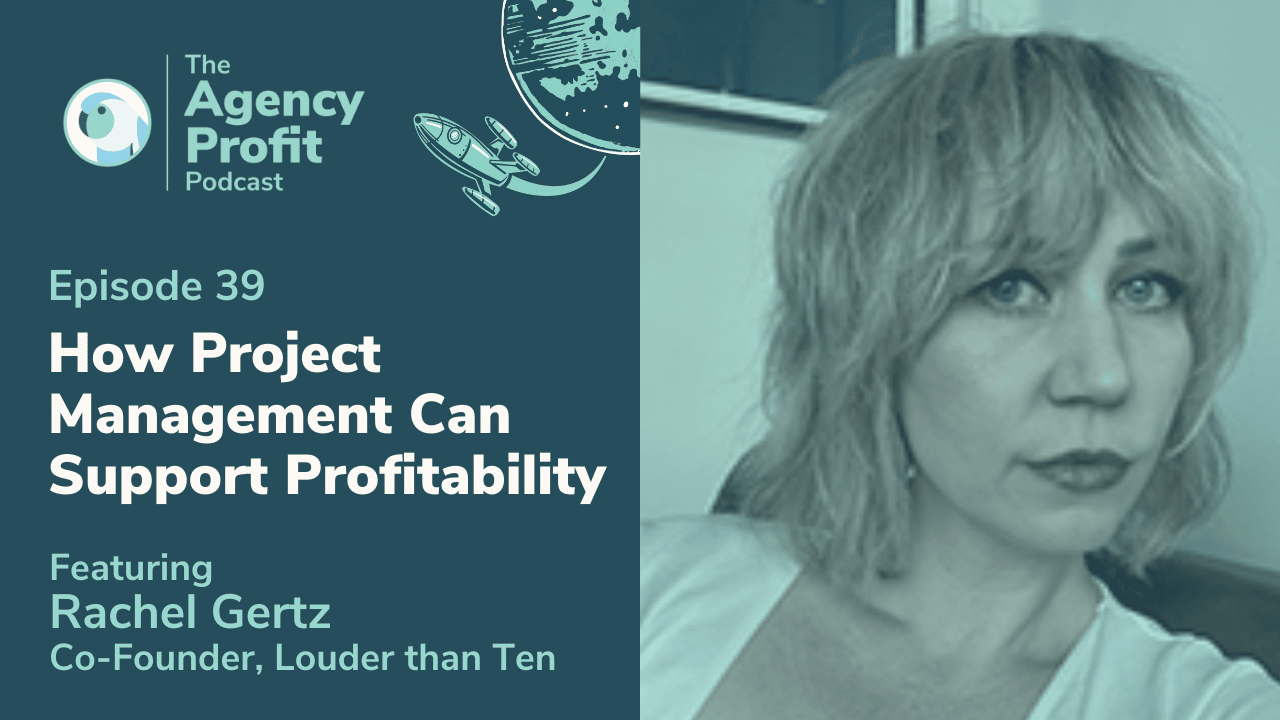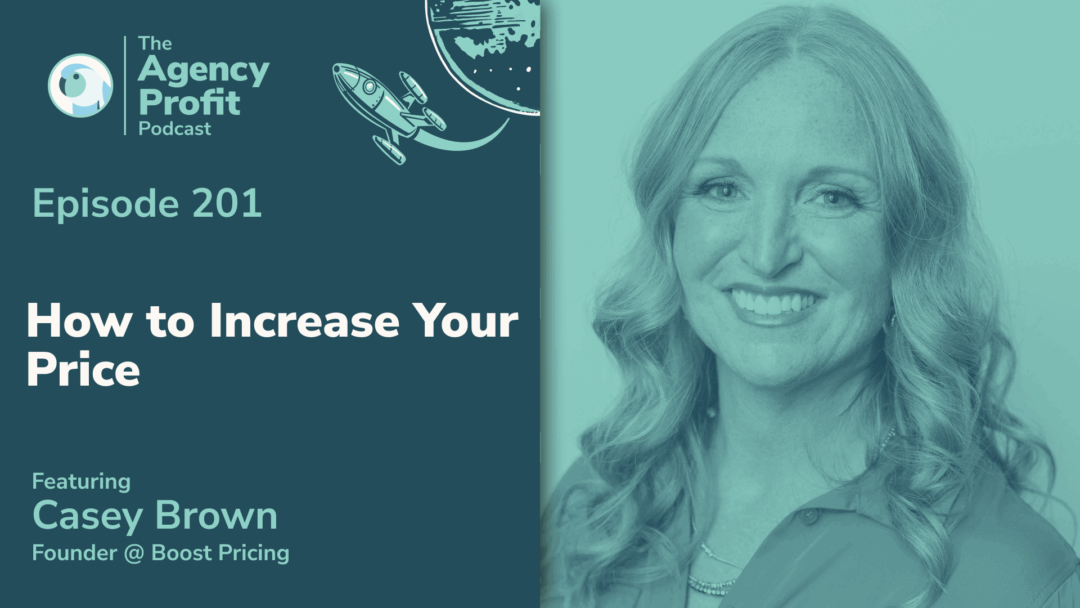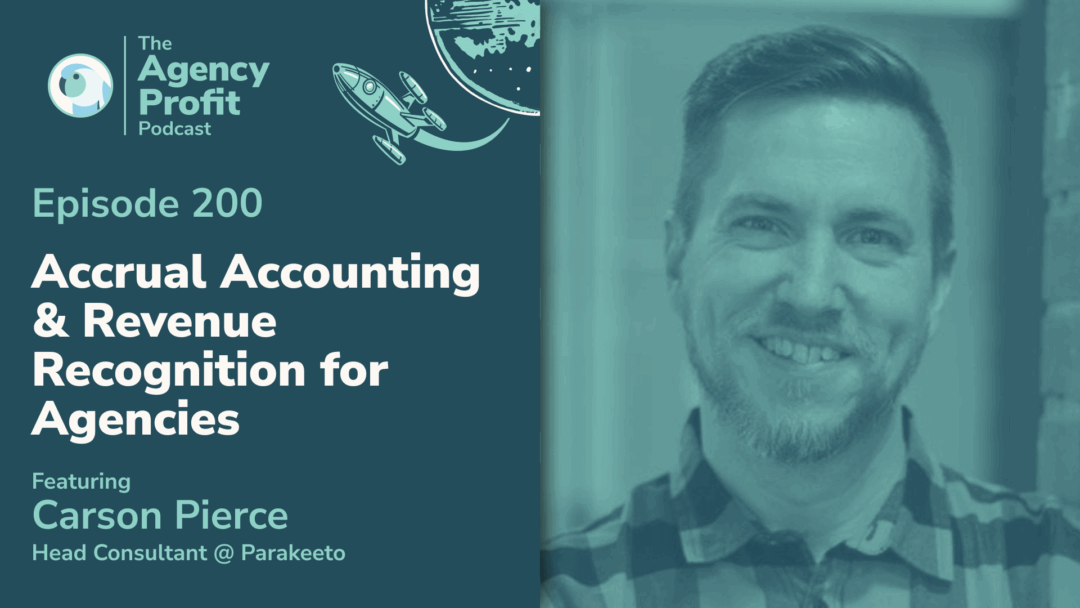This week, we pick the brain of Louder Than Ten co-founder, Rachel Gertz. We discuss how project management supports the profitability of the business, plus some of the key ways we can train our project managers to be better stewards of profitability.
About Rachel:
As well as being the co-founder of Louder Than Ten, Rachel is also a digital PM trainer at the company, which helps digital agencies and product studios train their Project and Operations Managers to deliver healthy and profitable projects.
Rachel trains tech companies how to knock their old project management flows upside down, by refining the most valuable steps in the process. Rachel helps companies understand what project numbers really mean, and how to turn blocks into opportunities.
Her mission is to transform the tech industry by training digital companies how to give back power to the people leading their projects.
Points of interest…
There’s more information regarding each point in our blog notes beneath the video.
- Setting up a product management function 2:43
- Productive conversations around project management 5:57
- Ensuring team alignment through project management 7:38
- Turning project risk into opportunity 10:01
- Tips to level up your project management game 14:43
Setting Up a Project Management Function
When it comes to setting up a project management function in your agency, what are some of the core things you’ve got to get right, in order to be successful?
Rachel cites three major contributing factors…
- PMs should be brought into the sales, or the project vetting cycle, right off the bat. This informs them how your company makes money and spends money.
- Project teams have the opportunity to turn risk into a mutual value. When they understand how the business needs of their organization work, they have increased power.
- Waiting for information is a huge time vacuum. Teams can reduce that waste upfront if they have better onboarding prioritization and relationship building.
Let’s unpack one of the main points above – getting project managers involved in the sales process.
More often than not, there’s a tension between the sales department, the creative department, and the project managers, the latter of which often wind up inheriting a slew of projects that, somehow, must get done on a decreased budget in zero time.
“Business development, or sales, and the PM need to see each other as allies. They need to see each other as left foot, and right foot, because you need both to be able to walk, right? You can’t do one without the other function.”
So, how do we start to eliminate said tension and create cohesion between the teams?
- Be cognizant that Sales and PMs have more in common than they have apart
- Discuss the existing sales process: does it work/why do we do it this way?
- What might sales notice that the PM may not, and vice versa
- What can the PM capture before that lead is closed?
We’ve unpacked a lot right there. So, in a nutshell: bring your PM in ASAP for the agency work, and/or get them talking early with executives and managers, on things like prioritization and bedding. Also, focus more on monthly revenue targets, and then reducing the time to launch, above being on time and on budget.
Productive Conversations Around Project Management
One of the most productive conversations is the one around alignment. Rachel usually runs a test, a Client Alignment Matrix, to help in this regard. It lets you plot your projects, or clients, individually and then analyze where you put them.
As you plot them together, as a team, you’ll notice that sales might have put them in one category, while you may put them in a different category entirely. That, right there, is a telling sign in terms of how successful you are at alignment.
It brings into question incentive structures, which are often the culprits in terms of pulling people out of alignment.
“We should be incentivizing monthly revenue targets that are actually healthy, and in support of our goals as a company, not something that’s, like, ‘I just closed enough dollars to meet the quota!'”
This brings us to the key components of making sure that we’re getting alignment throughout the team and having our project managers support that process.
Ensuring Team Alignment Via Project Managers
Every project needs to be viewed as a learning opportunity. We talk a lot about retros, but do we actually use them? Or, do we wait until the very end to quickly sum them up in, like, an hour?
“Usually, it’s not people failure. It’s process failure, right? Gaps happen, handovers break – because we’re not actually looking at patterns in the system”
To help pinpoint any gaps, Rachel runs her ‘Future Backwards’ template. It lets you plot out all the pieces of the project that happened – but in reverse. This is how you, as an agency owner, can start recognizing and then implementing your project framework to maximize profitability.
To reiterate; instead of waiting until the very end of a project to have the conversation, ask yourself and your team the below three questions regularly throughout the process.
- Where exactly are we in terms of process/project mapping?
- Are we okay at this juncture?
- Will we be okay if we continue on this path?
That allows the breathing space to talk about the environment around the product you’re building. It’s not just the thing we build, but how we build it. How do we make sure that we’ve built it the right way? By talking.
“One of the biggest challenges that I see is that we sell projects that don’t change. But, in reality, they do. They evolve. They morph. So, when we’re selling Project A and it turns into Project B, how can we still build project A if it’s not the right thing? I think that’s a beautiful opportunity to have better conversations.”
Turning Project Risk Into Opportunity
Scope creep and project risk, in general, is the bane of every project manager and agency owner’s existence. It is, however, possible to turn that on its head and use it to build stronger projects and relationships with your clients.
It doesn’t always have to be about the ruthless prioritization of “we have this much time, and this much budget, this is what needs to happen.” You can use it as an opportunity to get folks excited about what “could be”. This allows you to document future phases, future feature sets, and all of these other pieces that motivate creativity.
The pieces that might be deemed most risky could result in the biggest wins. For greater insight, you need to ascertain the following:
- The number of people impacted by launching this
- The length of time it will take to launch
- The amount of revenue that we can actually generate as a result – and that is higher than approaching these less risky MVP items.
Key Takeaway: Tips to Level up your Project Management Game
Firstly: have an all-hands between sales and PM ASAP to discuss the process and then document your process. Then give your PMs or project leads an opportunity to sit in on sales meetings, so they can take note of any potential red flags.
Before sales promise anything – because you shouldn’t be promising anything in those introductory sales meetings; those are vetting calls – the PM and the salesperson can retroactively talk through some potential risks.
Secondly: it’s vital to keep your project leads informed and empowered to be able to make decisions on your projects. In order to achieve that empowerment, they need to understand how money works; how team collaboration works; and the ability to guide that process.
Project managers are the nodes in the network. They are closest to the day-to-day activities and also closest to the stakeholders – who usually have little insight regarding the inner workings yet have a lot of impact on projects. They are the ones who can suddenly “swoop and poop” on the process at any time. If your PM is informed and empowered, however, there is a lot more transparency for everyone.
“Take the time to hire a project lead who can kind of tell you why a project is going to be successful. They have to be able to tell you if it’s going to be unprofitable or unsustainable. And if they can’t, then I say, come find us and we’ll train you.”
Lastly: Even in this strange time of uncertainty, don’t just say yes to everything and don’t grind out your workers trying to fulfil unrealistic goals. Why? Because this time will pass and we need to be positioning ourselves for the future beyond Covid-19.
Want to see more from Rachel? Follow her @…
Did you learn anything new from this episode? If so, let us know in the comments below – we value your feedback! Our next installment of #APP, on August 12th, will see Marcel share some of his own expertise, while August 19th will feature Jeremy Jackson. To view our previous blog with James Rose, make your way here…
Agency Profitability Tool Kit
If you’re looking for more resources to help you improve your agency’s profitability, then check out the Agency Profitability Tool Kit – it’s full of the same templates and checklists we’ve used with consulting clients to help them improve their profitability by over 100% in under 60 days.








0 Comments